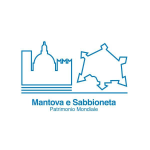Palazzo d'Arco Museum
Piazza Carlo d’Arco, 4
CONTACTS
Phone: +39 0376 322242
E-mail: biglietteria@museodarcomantova.it; info@museodarcomantova.it
Website: Palazzo d'Arco Museum
HOW TO GET HERE
Public Transport
From Piazza Sordello (A) you can travel on APAM line: 4T / 4C / 6
From the railway station (B) you can travel on APAM lines: 12 / 4T / 7E
All APAM buses are equipped with a lifting platform and there is a voice announcement service for stops on urban routes. At the moment, in order to receive adequate assistance, notification of the intention to use the service is required no later than two working days before use.
For further information, please visit: APAM - Servizi per la mobilità
By car
There are several parking areas near the Palazzo d’Arco, including reserved parking spaces (marked on the map). There is also a pay-to-park car park, also with reserved parking spaces, surfaced with clay and gravel.

PALAZZO D’ARCO MUSEUM
Entrance to the building
The entrance, from Piazza Carlo d'Arco, is level and offers direct access to the garden. From here it is possible to reach the lift to the rooms of the museum.


The reception desk at the entrance can only be reached via a few steps, so it is necessary to contact the staff by phone or with the assistance of a carer, to be taken to the lift.

Visitor route
The tour of the building is accessible to all, although, depending on the different rooms and layouts, some passages, while guaranteeing minimum spaces, are narrower. There are a few seats along the itinerary to allow a break during the visit.
In addition to the main visitor route, the spaces of the didactic workshop and the Luigi d'Arco room, used for temporary events, also have features suitable for extended use.
The garden is also accessible; the main path is surfaced with clay and gravel and is compact enough to be accessible by wheelchair users.
Toilets
The toilets are accessible by people with disabilities (as indicated by law).
Additional facilities
There are no additional facilities and there are no services to facilitate knowledge of the church by blind and visually impaired persons.
